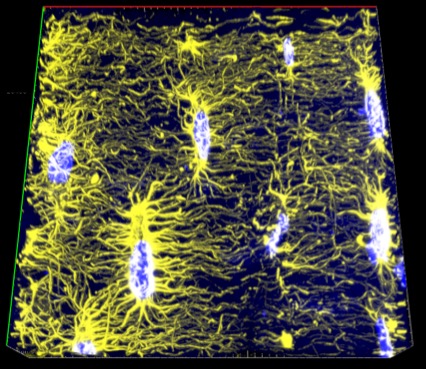Boerckel Lab receives NIH R21 grant on osteocyte mechanotransduction

Project Summary/Abstract
Osteocytes serve as the primary mechanosensors in bone, coordinating bone formation and resorption in response to mechanical demands; however, this coordination is lost in metabolic bone diseases such as osteoporosis, leading to reduced bone mass and increased fracture risk. Most current clinical treatments target inhibition of bone resorption, but osteoporosis is characterized by defects in multicellular coordination, orchestrated by the mechanotransductive osteocytes. The long-term objective of this project is to understand the mechanisms by which osteocytes transduce mechanical signals to regulate skeletal homeostasis, which may lead to therapies that can restore the balance in osteoporotic bone. Recent studies by the PI demonstrate that the mechanosensitive transcription factors Yes-associated protein (YAP) and Transcriptional co-activator with PDZ-binding motif (TAZ) have mutually compensatory roles in skeletal development, but their roles late in the skeletal cell sequence, in the osteocyte, have not been studied. We hypothesize that osteocyte YAP and TAZ are critical for bone adaptation to mechanical loading and that drugs that inhibit YAP/TAZ activity for cancer treatment may affect bone health. This hypothesis will be tested in two specific aims: Aim 1 will determine the roles of osteocyte YAP and TAZ in bone adaptation to mechanical loads. These studies will employ the mouse tibial loading model in which dynamic application of mechanical forces induces both cortical and trabecular bone adaptation. By conditional ablation of YAP, TAZ and candidate co-effectors from osteocytes, these studies will reveal, for the first time, the roles of these proteins in osteocyte function. Using a combination of biomechanical, genetic, and molecular biology approaches, we will identify the molecular effectors of YAP/TAZ-mediated mechanotransduction in osteocytes in vivo. Aim 2 will determine whether pharmacological YAP/TAZ inhibition impairs bone adaptation. Pharmaceutical targeting of YAP/TAZ activation shows promise as an anti-cancer therapy; however, cancer treatment-induced osteoporosis is a common side effect of anti-cancer therapies, and may be induced by drugs that inhibit YAP/TAZ activation. Therefore, understanding the influence of these drugs on bone homeostasis and remodeling will be essential for assessing drug safety and efficacy. Together, these studies will establish a novel mechanotransductive signaling pathway in the osteocyte, and will significantly impact our understanding of osteocyte control of bone formation, homeostasis, and mechanical adaptation, with broad implications for metabolic bone disease and anti-cancer therapy.
